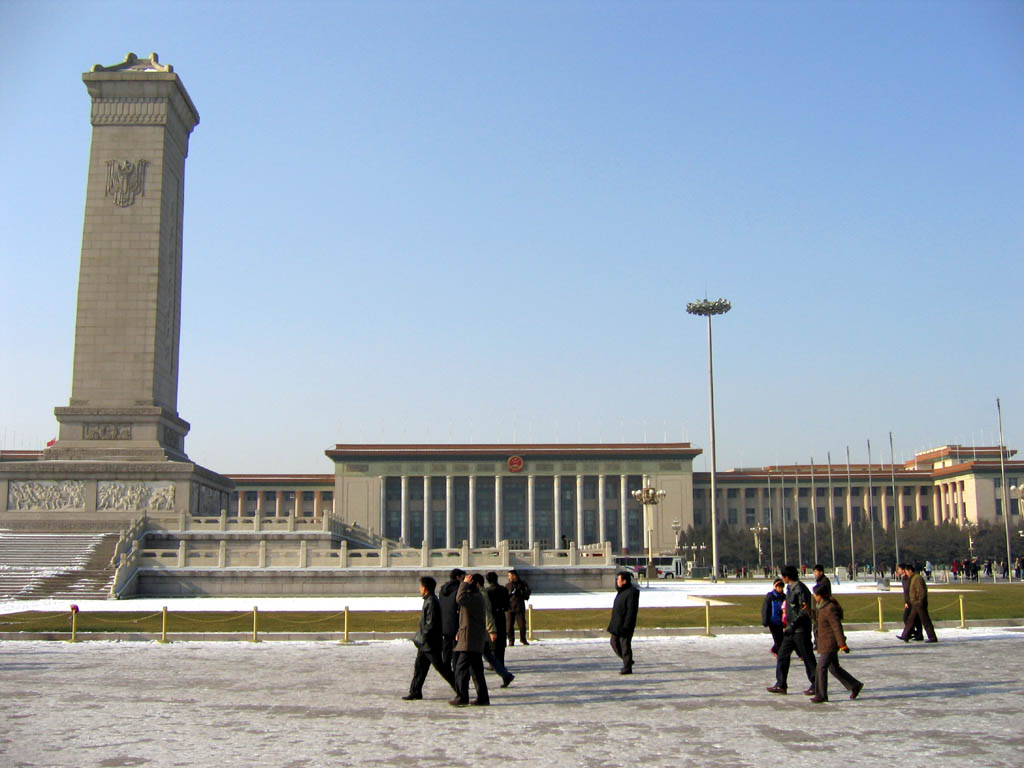
Published 03/05/2024 14:55 | Edited 03/05/2024 16:12
Prime Minister Li Qiang announced this Tuesday (5) that China will maintain the target of gross domestic product (GDP) growth at “around 5%” for the year 2024. This decision reflects the continuity of the adopted strategy in the previous year, demonstrating an attitude of economic stability amid the challenges faced by the country. The statement was made during the reading of the first government work report at the traditional “Two Sessions” meeting.
Targets for Gross Domestic Product (GDP) growth and other economic indicators were revealed during the opening of the annual meeting of the National People’s Congress (NPC) or National People’s Congress (NPC), the parliament in China. This event sets the country’s economic direction for the next year.
In 2023, Chinese GDP increased by 5.2%, remaining close to the official target of around 5%. However, several challenges, such as the crisis in the real estate sector, weak domestic consumption and rising unemployment, persisted, even with the gradual return to normal activities after the impacts of the Covid-19 pandemic. These factors contributed to keeping economic growth contained.
This year’s target will be more difficult to achieve than last year’s because the favorable base effect of a Covid-19-hit 2022 has disappeared.
Growth incentives
In his speech, Li Qiang acknowledged the challenges facing China in post-pandemic economic recovery, as well as the negative impacts of the global external environment on the country’s development. He also mentioned plans to reform the tax and taxation system, although without going into specific details. The deficit-to-GDP ratio was set at 3% for 2024, with the government deficit increasing by ¥180 billion (around R$123.8 billion) in relation to the 2023 budget value.
For 2024, the established target is in line with economists’ forecasts, remaining the same as the previous year. A real estate support package and other stimulus measures are expected to be implemented to boost the Chinese economy throughout this year.
To meet the target, China plans to run a budget deficit of 3% of economic output, down from last year’s revised 3.8%, the report said. But most important is the plan to issue 1 trillion yuan ($139 billion) in special, ultra-long-term treasury bonds over several years to finance major national strategies, which are normally not included in the budget.
According to the Prime Minister, a stable, transparent and predictable political environment will be created for companies and the focus will be on “communication with the market”.
Expanding domestic demand, promoting steady growth in consumer spending and a one-year program to boost consumption were also highlighted as targets for 2024.
Li added that the government plans to provide broader access to private investors in areas such as telecommunications and medical services, while expanding foreign trade, including cross-border e-commerce. Plans have been announced to “completely eliminate” the threshold for foreign investment in the industrial sector.
As disclosed in the government report, the forecast for the unemployment rate in the country is around 5.5%. In addition, 12 million new urban jobs and consumer inflation of 3% are expected. These goals for 2024 were maintained in line with those established for the previous year.
The Prime Minister highlighted the need to boost employment for young people and offer guidance and services to facilitate their insertion into the job market or entrepreneurship.
The Chinese government announced that stable economic growth will be a priority in 2024, amid persistent challenges such as the real estate sector and structural imbalances in the economy. While the country seeks to maintain its pace of expansion, it faces difficulties arising from a high comparison base and internal obstacles.
Containment elements
The housing crisis, deepening deflation, a stock market rout and mounting local government debt problems are putting great pressure on China’s leaders to make key policy decisions that will put the economy on a solid long-term footing.
Analysts note that, compared to the previous year, a growth target of around 5% is still considered ambitious. And they highlight the challenges of economic recovery, issues in the real estate sector and the decline in business and consumer confidence, highlighting the importance of focusing on the return of confidence and spending. They expect China to scale back its annual growth ambitions in the future as it needs to make difficult decisions about how to correct these deep structural imbalances.
To address these challenges, Beijing has signaled a “moderate strengthening” of fiscal stimulus, while remaining cautious regarding sovereign debt sustainability. The fiscal deficit target in relation to Gross Domestic Product (GDP) remained at 3%. However, although the target for GDP growth was within expectations, the debt/GDP ratio dashed hopes.
Defense and Taiwan
In addition to economic issues, Li Qiang also addressed topics related to defense and foreign policy. He emphasized the need to strengthen military training and preparedness at all levels of the People’s Liberation Army. A 7.2% increase in the country’s military budget was announced, which will be set at 1.66 trillion yuan (about US$231.4 billion).
As for Taiwan, the prime minister stated that China will firmly oppose “Taiwan independence” and external interference. He reaffirmed commitment to the one-China principle and opposition to separatists, defending the fundamental interests of the Chinese nation and seeking to promote the peaceful development of cross-Taiwan Strait relations.
“I would like to point out that, compared to major military powers such as the United States, China’s defense spending is quite low, whether as a percentage of gross domestic product [PIB] or the total budget, whether in terms of expenditure per citizen or per soldier”, said the spokesperson for the second session of the 14th NPC, Lou Qinjian, at a press conference on Monday (4).
Innovation and technology
The Chinese government should adopt a more accommodative and expansionist stance, seeking to boost economic growth. However, strong monetary easing is less likely due to the negative differential relative to the US interest rate and concerns about foreign capital flight.
“We will work to expand our global network of high-level free trade zones and help local governments and companies open new avenues for foreign trade, making better use of free trade agreements,” the document states.
In practice, this new type of economic development will be driven by new productive forces, prioritizing quality over quantity. Innovation and technology will be the main drivers for developing these new productive forces, as highlighted by the Chinese government. This approach reflects the search for an economy that is more resilient and adaptable to global changes, maintaining growth in a sustainable manner.
China has committed to becoming self-reliant in spheres ranging from Artificial Intelligence (AI) to chip manufacturingin front of the US-led attempts to contain its development. The country has invested heavily in industrial and consumer research and development (R&D) in recent years, with around 2.5% in 2022 as a percentage of GDP.
The government will increase R&D spending by around 10%, with the report highlighting industrial and supply chain upgrading, and with greater focus on future-oriented industries such as biomanufacturing, quantum technology, hydrogen energy, spaceflight trade and development of the digital economy. The country also aims to consolidate its leadership position in industries such as smart connected new energy vehicles.
China’s official parliament is not the traditional venue for sudden political changes, which are typically reserved for events known as plenums, held by the Communist Party between its once-every-five-year congresses.
Source: vermelho.org.br

